
Flex Report Q3 2025
Hybrid and Remote Work by the Numbers
Please provide your email to access the report.
Once subscribed, please close the modal to access the report.
Workplace Flexibility
Flexibility continues to be the norm
Business Performance
Fully Flexible firms outperform mandate-driven peers
Policy Compliance
The mandate-compliance gap persists
Fortune 100
The Fortune 100 is still Hybrid, but tightens requirements
Firm Size
Smaller firms maintain a flexibility advantage
Office Strategy
Flexibility is the future for offices
Flexibility continues to be the norm
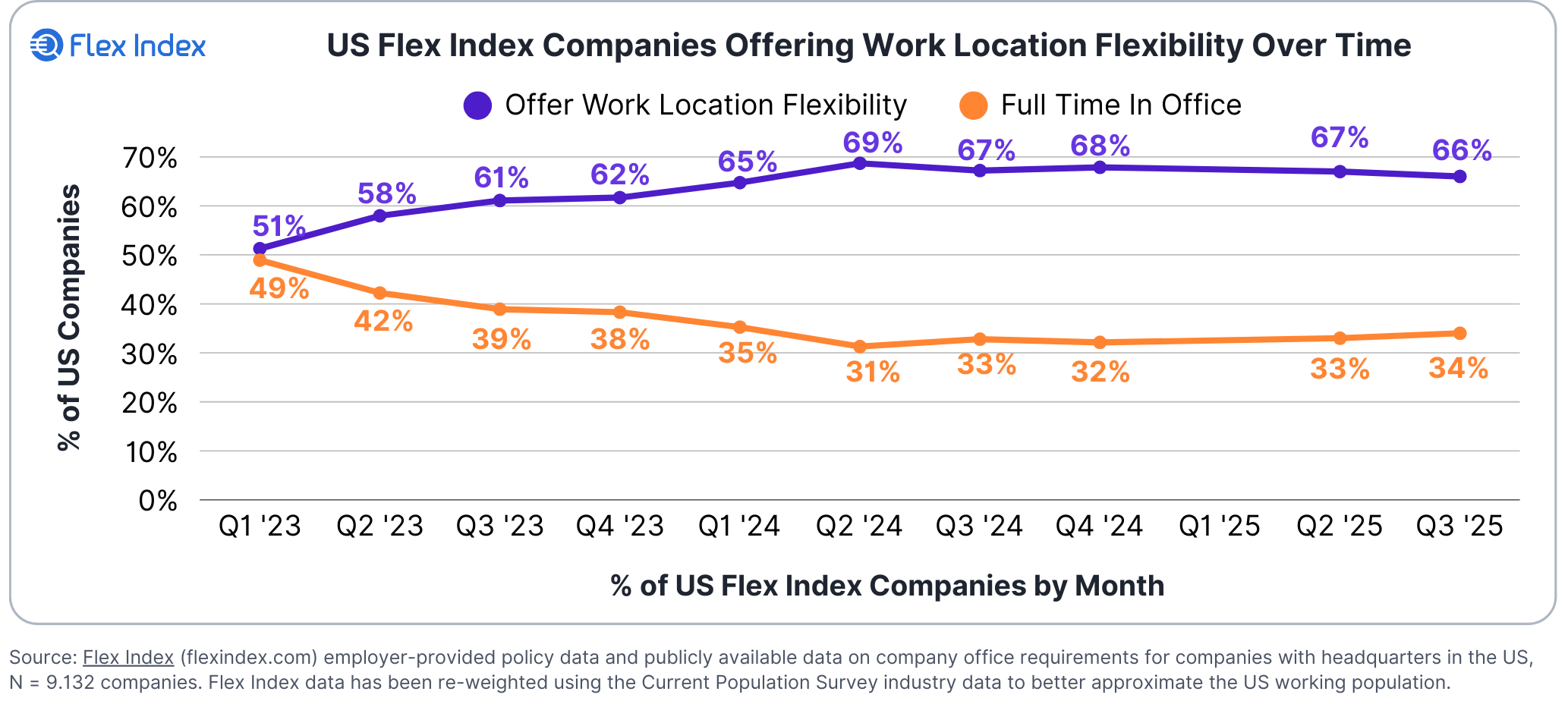
Flexibility continues to be the norm
Two-thirds of U.S. firms (66%) continue offering location flexibility. Only one-third (34%) require full-time office presence – a 2-point increase from last year driven primarily by federal and state government agencies.
Fully Flexible firms outperform mandate-driven peers
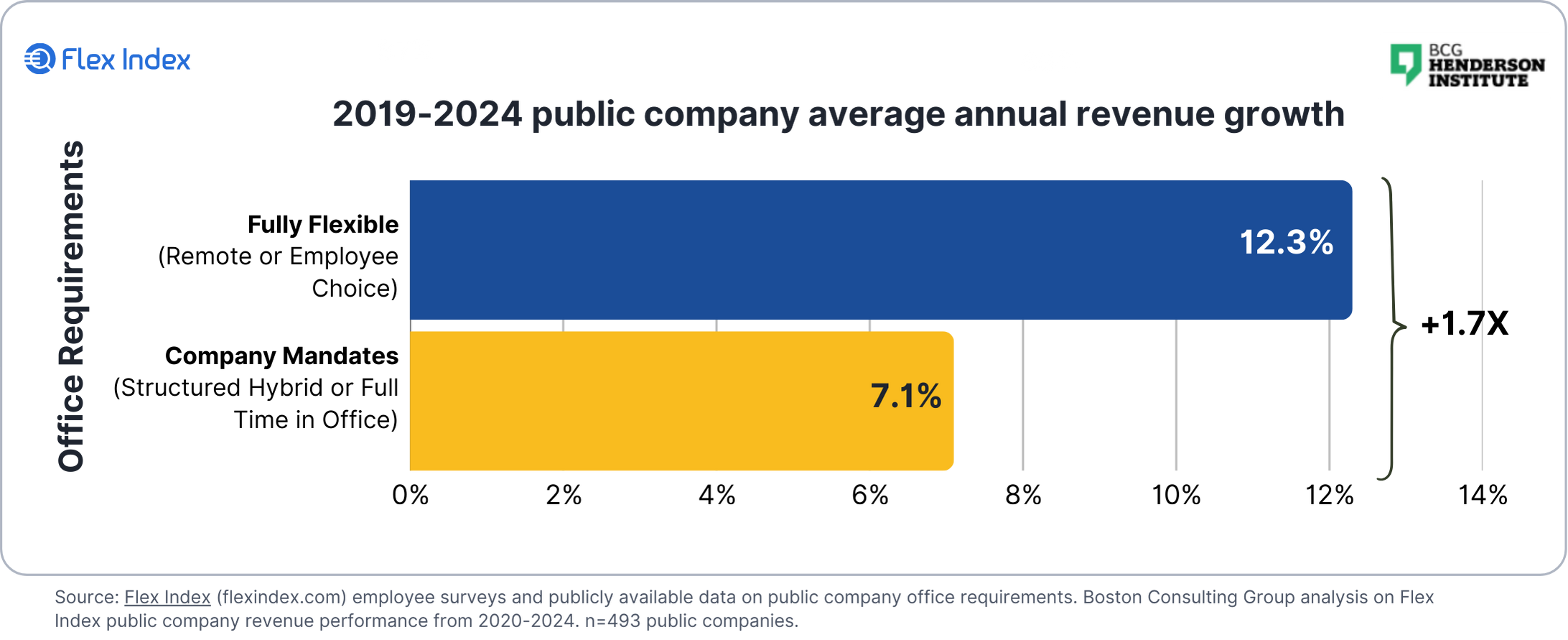
Fully Flexible firms outperform mandate-driven peers
Joint BCG research shows Fully Flexible companies grew revenues 1.7x faster than mandate-driven firms from 2019–2024. Even adjusting for industry and size, the growth advantage remains: growth rates 34% higher than peer companies. Flexibility directly impacts business performance.
The mandate-compliance gap persists
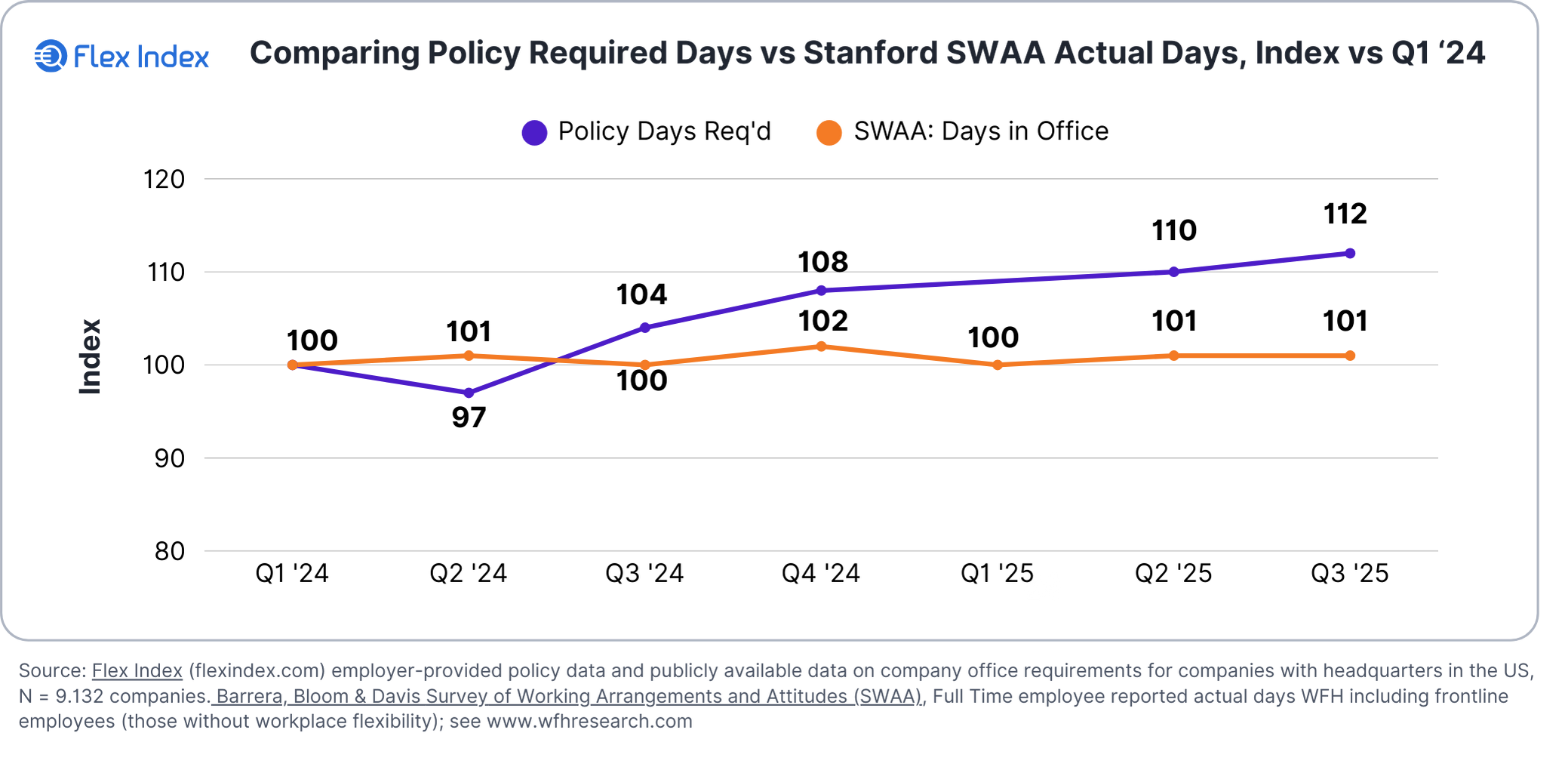
The mandate-compliance gap persists
Required office time climbed 12% since early 2024, but actual attendance increased only 1–3%. Policy shifts faster than behavior over the past year. We're seeing some signs of increased attendance in early Q3 as the job market continues to weaken.
The Fortune 100 is still Hybrid, but tightens requirements

The Fortune 100 is still Hybrid, but tightens requirements
71% of Fortune 100 firms remain flexible, with 3-day hybrid as the most common policy (35%) with 29% requiring Full Time in Office. But 45% now require either 4 or 5 days in office, meaning nearly half of Fortune 100 workers are in the office almost daily.
Smaller firms maintain a flexibility advantage
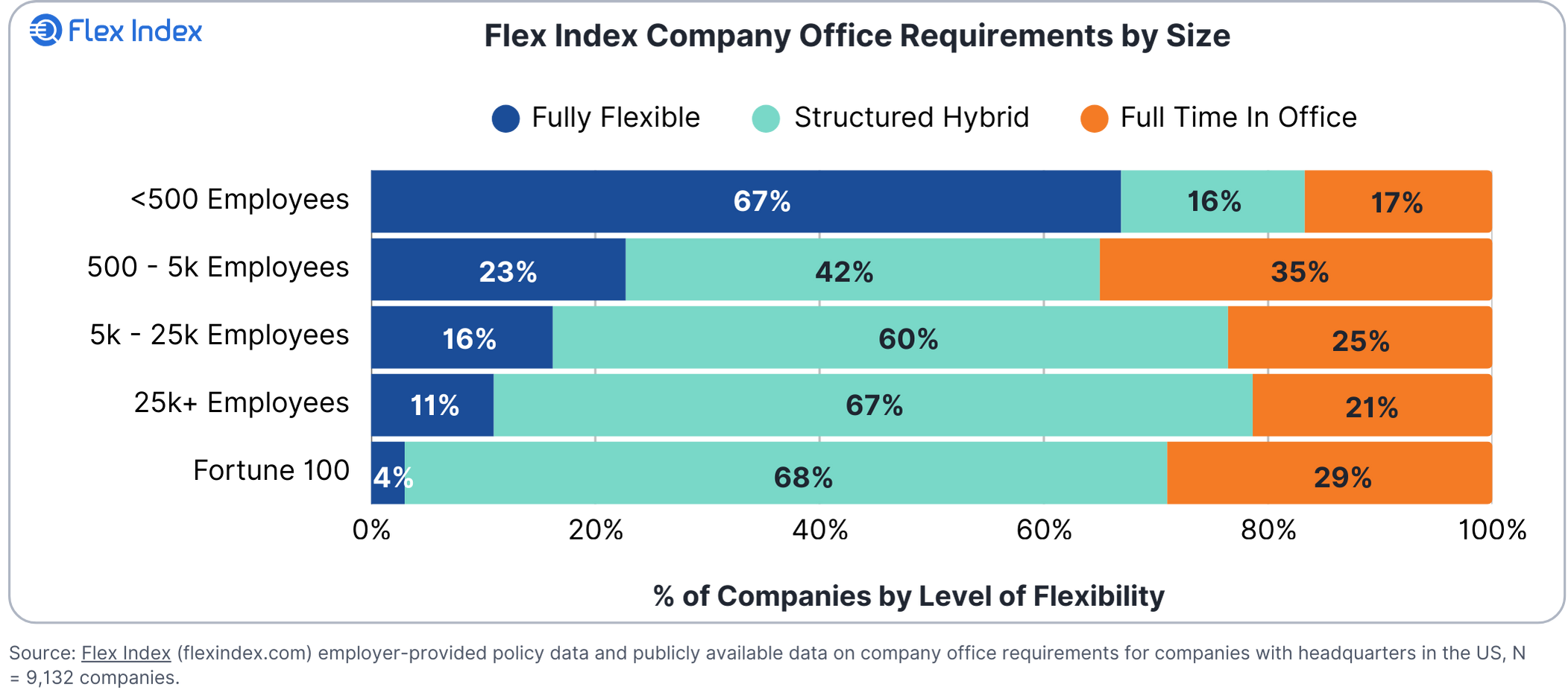
Smaller firms maintain a flexibility advantage
67% of companies under 500 employees are Fully Flexible, covering half the US workforce. Even excluding tech firms, smaller employers offer dramatically more flexibility than large enterprises.
Flexibility is the future for offices
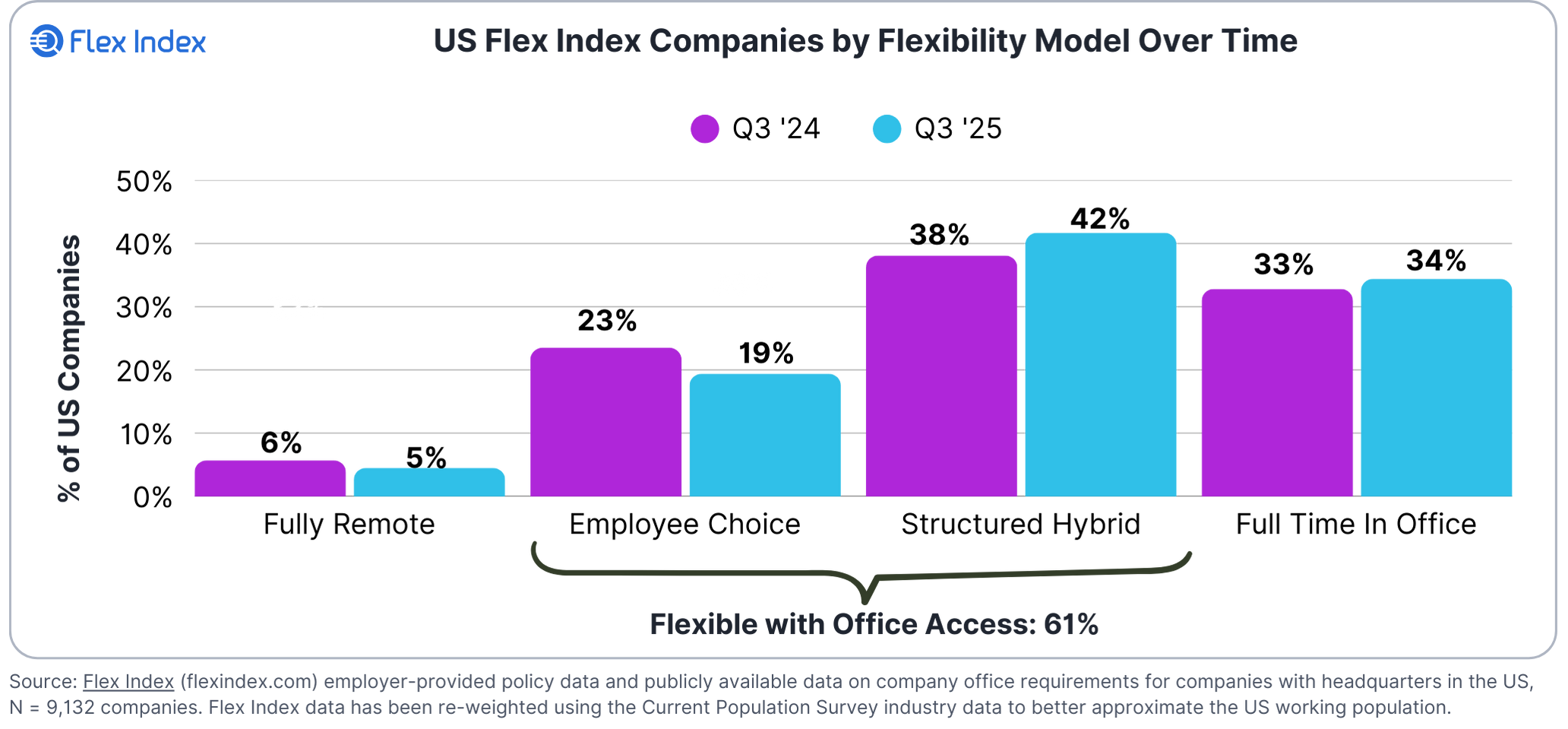
Flexibility is the future for offices
The vast majority of firms provide both access to offices and some form of flexibility: 61% of firms have both flexible policies and provide access to office space – flat with last year.